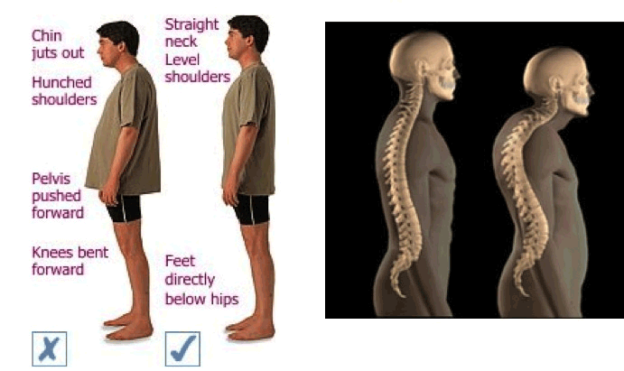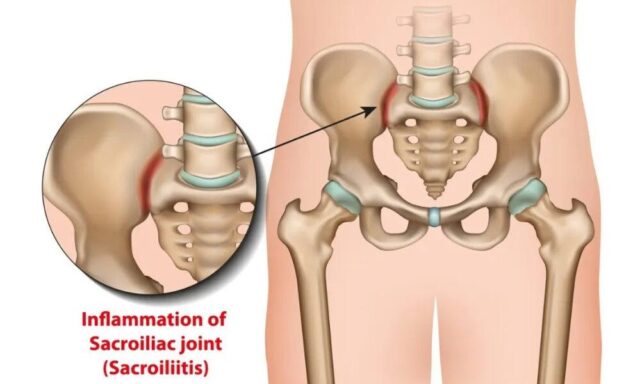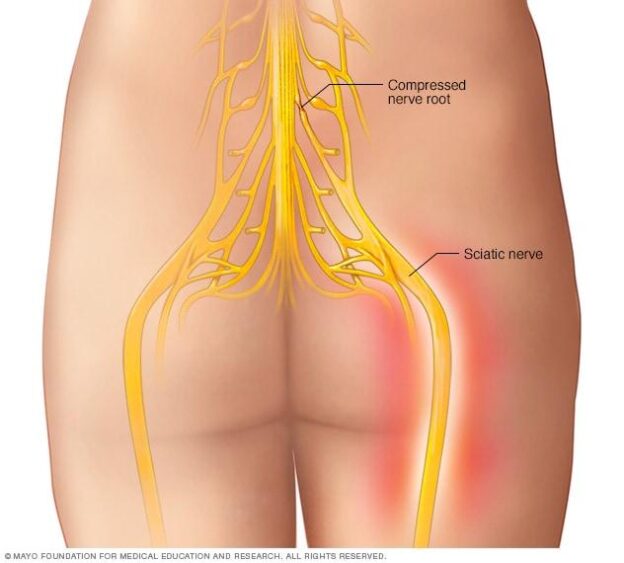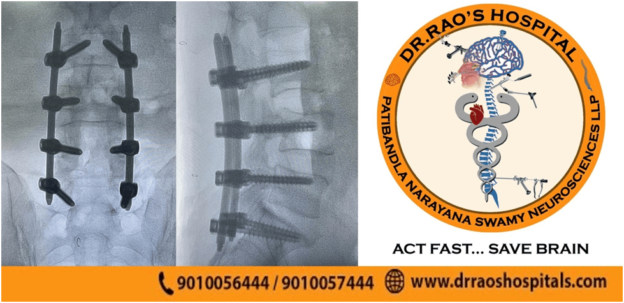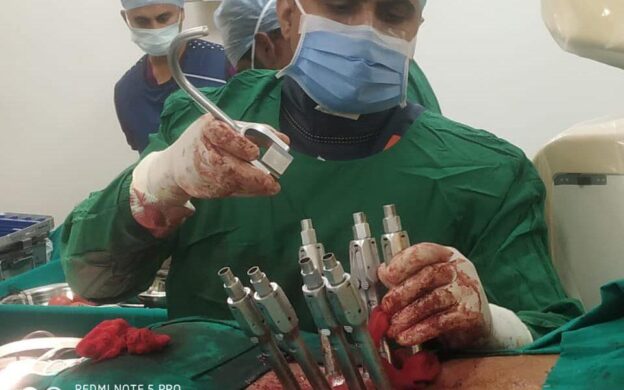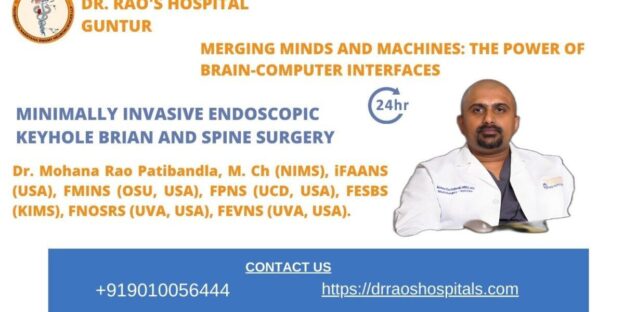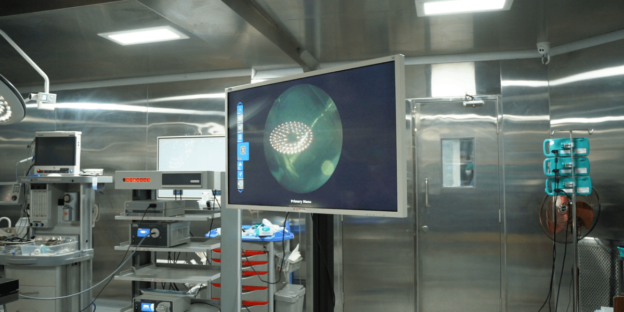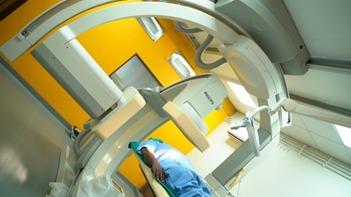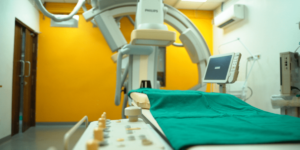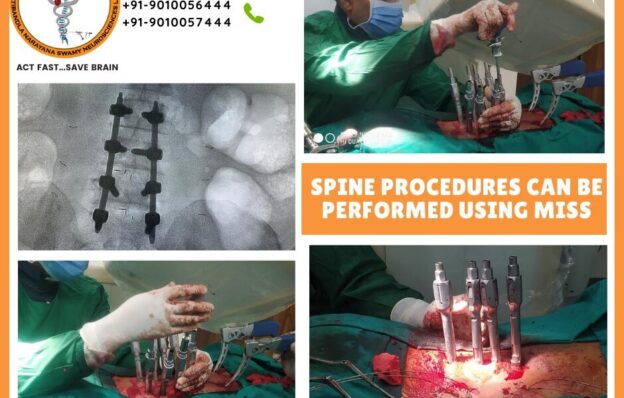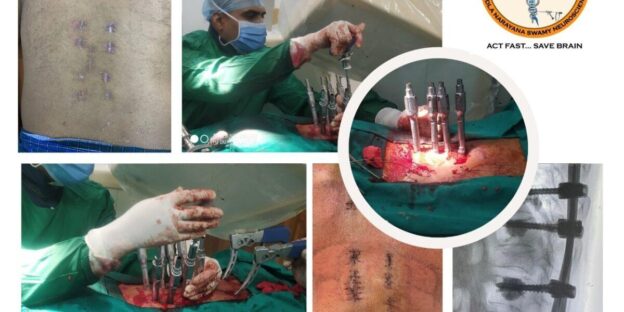The best Back Pain treatment in Guntur is Dr Raos
Know your spine
Your spine consists of 33 bones (vertebrae) and 23 shock absorbers (discs), carrying 31 pairs of nerves. The discs have interior gel and exterior, firm cartilage. The spinal column primarily protects the spinal cord and nerves, carrying the weight on its long axis. The spinal column is divided into cervical, thoracic, or lumbar regions, or, in layman’s terms, neck, midback, or lower back areas. The neck and lower back are highly mobile, and the middle back is relatively less mobile and is attached to the rib cage and sternum.
In the same way, neck or lower back pain is more common than mid-back pain. Suppose you are looking for a back pain specialist, spine surgeon, or spine neurosurgeon. In that case, your choice is Dr Raos Hospital, the best spine surgery, spinal surgery, or spine specialist hospital in Guntur, India. Call us at 9010056444 or 9010057444. Dr. Rao is the best minimally invasive spine surgeon available in India, and he is the top neurosurgeon in India, according to MIDDAY Newspaper.
The most common reason for mid-back pain is a muscle sprain or strain.
“The most common reason I see people with upper or midback pain is a simple musculoskeletal strain,” says Dr. Mohana Rao Patibandla, CMD, Dr. Raos Hospital, Guntur. Generally, you hurt your back while doing yard work or tennis. Spinal cord injury is also a possibility, but it occurs with injury. Typically, spinal injuries occur in older adults with osteoporosis and young people due to falling from heights.
What are the Symptoms of your mid- or upper back pain?
If you get pain in your upper back following a weekend’s enjoyment, it is most likely a muscle sprain. You may experience:
- Pain
- Tenderness to touch
- Headache
- Tightness
- Stiffness
If the pain is secondary to the nerves, bones, or discs of the dorsal spine, you may get symptoms like:
- Pain down the legs
- Pain in the lower back
- Numbness or weakness in your legs
- Incontinence (bowel and bladder incontinence)
What causes your mid-back or upper back pain?
1. Soft tissue injury like muscle sprain is generally due to everyday behavioral activities, including but not limited to
- Poor posture
- Twisting
- Text neck
- Lifting improperly
- Whiplash or other neck injuries
- Repetitive movements
- Overuse
- Carrying too heavy a load
- Contact sports
- Wearing an overloaded backpack
2. When you look at the senior population, the list of common causes expands. “In elderly people, we have to consider osteoporosis and compression fractures, as well as the rare occasion of a neoplasm, such as multiple myeloma and lymphoma,” Dr. Rao says. No need to be a senior to experience a problem directly related to your thoracic spine, though.
- Osteoarthritis
- Inflammatory conditions such as ankylosing spondylitis
- Herniated disc
- Fracture of a vertebra
- Osteoporosis
- Cancers that affect the spine
- Spinal stenosis
Don’t let that long list of potential, severe conditions alarm you too much. “In younger patients – and when I say young, I mean people up to their mid-60s – it’s most commonly a strain,” Dr. Rao says.
What are the Risk Factors for your mid-back or lower back pain?
- Acute, unaccustomed work
- Sedentary lifestyle
- Psychological depression or anxiety
- Excess weight or obesity
- Belly fat
- Smoking
Smoking – This terrible habit reduces blood flow to the spine, which prevents your back from getting the nutrients it needs to stay healthy. Your discs might degenerate because of smoking. In some people, quitting smoking may help restore some of the loss. But even when the discs don’t regenerate, quitting smoking reduces inflammation that causes back pain.
What tests are needed for the diagnosis?
- Good clinical history – red flags like fever, weight loss, weakness of legs, decreasing sensation over the body or legs, severe pain, bowel or bladder involvement
- Clinical exam: tenderness, multiple tender bones, weakness, or decreased sensation
- MRI: If you have “red flags such as a weakness or bowel or bladder incontinence,” you may get more advanced testing like MRI,” Dr. Rao says.
- They can show herniated disks, nerves, muscles, ligaments, and other problems.
- Blood tests for infection or inflammatory diseases like rheumatoid arthritis or multiple myeloma.
- DEXA scan: Osteoporosis
- NCS
- EMG
What kind of management do I need?
Nonoperative or conservative management includes the initial management options like Icing, heating, over-the-counter medication, gentle stretching, restriction of activity for 2 to 3 days but not absolute bed rest, Posture exercises like chin tuck, Imagery, Shoulder blade squeeze, upper back stretch, and prescription medications like muscle relaxants if needed.
Most upper or mid-back pain will subside within three weeks, and nonserious problems will subside within six weeks. Resume your regular activities slowly, and perform and increase activities if you don’t have hurt.
Why do you need surgery as an option?
Surgery – The idea of spine surgery itself is scary, but occasionally it’s the right choice to get relief from symptoms. Surgery is very rarely indicated for isolated upper or mid-back pain.
Indications include –
- If persistent pain for more than six weeks
- does not decrease with medications,
- there are alarming symptoms like weakness, sensory disturbances, or bowel and bladder incontinence.
- MRI showing disc or cancerous lesions
Surgery Options
- Kyphoplasty or
- Vertebroplasty
- Spinal laminectomy/spinal decompression
- Microdiscectomy
- Spinal Fixation and Fusion
How will my back pain repair be?
Pain relief depends on the cause of the pain in the mid-back or upper back.
- The bad news is some people will never be pain-free. Chronic pain conditions like fibromyalgia or spinal stenosis – it’s essential to manage expectations for relief, says Dr. Rao; “The truth is that chronic pain is an emotion, and there is no cure. You can only manage it,” says Rao. That means a combination of physical and mental therapy is required.
- The excellent news is that that musculoskeletal pain can be greatly improved simply by moving sore muscles more. However, with back pain, especially if you don’t know the cause yet, Dr. Rao warns against doing this on your own.
- The best news is most back pains get better on their own, even if you do nothing but exercise patience.
When to call your doctor for upper back pain or mid-back pain?
There’s no need to rush to the doctor for an exam for mild upper back soreness that you can link to an activity. When you have upper back pain and other symptoms like leg weakness, decreased sensation, or bowel and bladder control issues, it’s worth calling your doctor to determine the next steps. The thing is, upper back pain affects everyone differently. Partly, that’s because there are so many possible reasons for your upper back (also mid back) pain. The first step in solving your upper back pain problem is understanding why it’s happening. To do that, start with learning your anatomy.
If you are looking for a back pain specialist, spine surgeon, or spine neurosurgeon, your choice is Dr Raos Hospital, the best spine surgery or spine specialist hospital in Guntur and India. Call us at 9010056444 or 9010057444. Dr. Rao is the best minimally invasive surgeon available in India and one of the top neurosurgeons in India, according to the Midday Newspaper.

